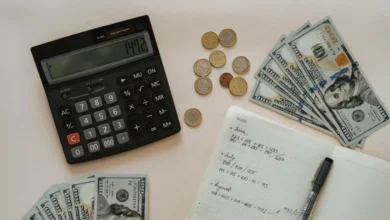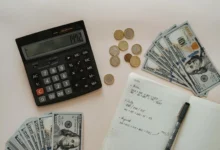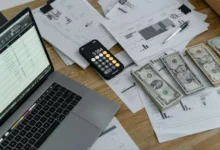As More People Dive into The World of NFTs, DeFi, And Web3, Understanding Ethereum’s Gas Limit Becomes Important

The world of cryptocurrency has experienced significant growth and transformation over the span of years, yet its future has never been so unclear. The emergence of NFTs, DeFi, and Web3 has paved the way for a new era of innovation – blockchain technology has become so ordinary that we can’t imagine life without it. Ethereum’s versatility and ongoing development make it the number one pick for various applications, from financial innovation to social change. It’s based on a philosophy of constant evolution, enhancing scalability and energy efficiency. Ethereum’s aim isn’t to establish itself as an alternative monetary system but to facilitate the operation of smart contracts, dApps, and other blockchain solutions.
More complicated transactions that involve smart contracts demand more computational work, so they have a high gas limit as compared to simple payments. The higher the gas limit set, the more Ethereum you spend. In this respect, it’s recommended to consult an Ethereum price chart. Transactions can be very complex, sometimes calling multiple smart contracts, and setting the proper gas limit could make a difference between a transaction being recorded onto the blockchain and failing on the network. Any gas not used is returned to the user. The gas limit ensures the blocks aren’t too big, which could impact Ethereum’s performance and synchronization.
Ethereum Has a Maximum Limit Of 30 Million Gas
The average gas limit after the birth of Ethereum and its blockchain ecosystem was approximately 3 million, which has increased with time, in tandem with network usage and adoption. Miners raised Ethereum’s gas limit in an attempt to relieve congestion. Each transaction requires Ethereum users to pay gas fees, denominated in small fractions of the cryptocurrency, gwei, that is. The gas limit determines how many units of gas you’re willing to pay for. As a way of exemplification, if the gas limit is 10,000 and the gas price per unit is 500 gwei, you’ll pay 0.005 Ethereum.
The current gas limit is 30 million. Following Ethereum’s London update, the target block size is 15 million gas, yet the real size of the block will vary based on network demand. The protocol achieves an equilibrium via tâtonnement, which literally means trial and error. This process (re)iterates to support equilibrium in the long-run evolution of the block size. Attention must be paid to the fact that lowering the gas limit is ineffective as regards lowering the gas burden because the same number of computational resources are necessary to process the transaction.
Vitalik Buterin Proposed Raising the Ethereum Gas Limit To 40 Million To Enhance Network Throughput
Ethereum’s co-founder Vitalik Buterin pushes for raising the gas limit by 33%, from 30 million to 40 million gas units, to reduce fees to end users, but at the expense of increasing operational costs for validators. During a Reddit AMA (which stands for Ask Me Anything) arranged by Ethereum Foundation’s research team on January 10, 2024, Vitalik Buterin drew attention to the fact that the gas limit hadn’t increased in the past three years, the longest time since Ethereum’s Genesis. The co-creator of Ethereum recommended increasing the gas limit to 40 million units of gas, a move that wouldn’t require an update or a hard fork.
A gas limit increase would allow more transactions to be folded into each block, therefore lowering overall costs. The 33% increase wouldn’t require a major change to the code, so validators should be able to implement the amendment by adjusting certain parameters in their node software. Requests for increasing the gas limit surfaced in December last year when some of Ethereum’s Layer 2 protocols started experiencing record usage. Ethereum’s Layer 2 TVL (total value locked) reached an unprecedented peak of $21.6 billion, with Arbitrum One holding roughly 50% of the market share. Jesse Pollak, the creator of Base and Head of Protocols at Coinbase, suggested Ethereum’s gas limit should be increased even further.
As For What the Gas Limit Increase Achieves, It Simply Allows for More Activity on Layer 1
Solutions are built on top of Layer 1 to enhance the scalability of the Ethereum network. Ethereum accommodates thousands of transactions and applications, such as DeFi, gaming, NFTs, and so forth. Nevertheless, the protocol struggles with limited storage and interoperability issues, so it can’t handle an increasing number of transactions and users without compromising on transaction speed and fees. Despite core upgrades like the Merge, Ethereum still needs a scaling solution to address the masses. Increasing the block gas limit by 33% would allow for more activity on Layer 1, Ethereum’s main network.
Ethereum runs on a blockchain network that is commonly referred to as a Layer 1 blockchain. The existing architecture validates transactions and executes smart contracts without the need for intermediaries, which saves time and reduces the risk of fraud. It’s the only one responsible for maintaining the distributed ledger. Processing a transaction involves recording a user’s cryptocurrency balance via a cryptographic scheme requiring two different keys. Consensus is used to finalize the trade or sale. Ethereum’s base Layer works well until the network gets clogged, so developers have responded by creating fast and affordable scaling solutions to sit on top of the main chain.
The Takeaway
Vitalik Buterin, the co-founder of the second most popular cryptocurrency, called for a 33% gas limit increase during an AMA on Reddit, which would imply an increase to 40 million. By allowing for more transactions into the block, the gas limit can be raised, thus increasing Ethereum’s network capacity and overall throughput. Some argue it could put more strain on the system and raise the possibility of spam and assaults. The space needed right now is 267GB, and the Ethereum blockchain full history data size is approximately 900GB. For the time being, there are no solutions for state growth.
Your wallet will automatically set a gas limit based on the address or contract you transact with. In any case, it’s recommended to double-check current gas prices prior to executing a transaction.
Check out these top tips to elevate your skills today!






